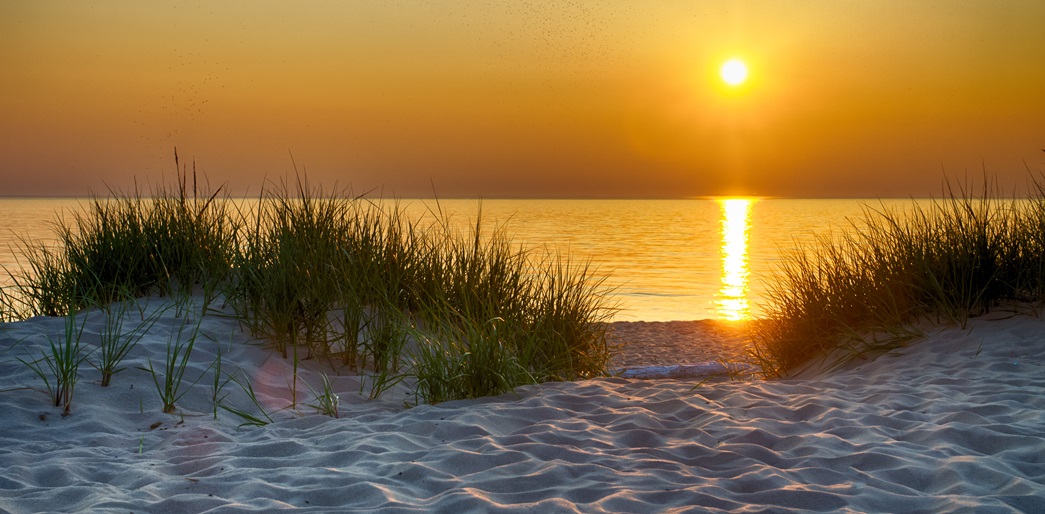When President Trump announced that he wanted to “make America great again”, few realized that he meant taking it back to exactly how it used to be: with a toxic, lifeless system of Great Lakes that were little more than open sewers. What few fish remained back in those “great” days were too contaminated to eat.
Over the past two decades, heroic measures have been taken to restore the Great Lakes, usually with bipartisan support. But in 2017, Trump proposed that the Great Lakes Restoration Initiative (GLRI) be eliminated. Stunned by the backlash from socially, economically and environmentally responsible members of his own Republican Party, he later amended his budget to keep the GLRI alive, but with only 10% of its prior funding. In other words, he was still killing it, but was too afraid to say so.
Republican and Democratic leaders were united in their horror at the announcement, especially those from the upper Midwest. Their states—and many of their major cities—were already staking their economic futures on having clean, beautiful, productive Great Lakes. The GRLI is an eight-state, binational, bipartisan effort to clean up polluted areas and restore them to their natural conditions.
So on March 21, 2018, a bipartisan coalition led by United States Senators Sherrod Brown (D-OH) and Rob Portman (R-OH) announced that full funding of the $300 million needed for the Great Lakes Restoration Initiative was expected to pass that week (it did).
“Efforts to slash funding for GLRI were met again with fierce opposition from all the Ohioans who rely on Lake Erie for a job, a source of water or a place to be outside with their families,” said Senator Brown. “I’m glad to continue working with Senator Portman to ensure GLRI has its full strength as communities continue their important work to keep Lake Erie clean.”
The Great Lakes Restoration Initiative was launched in 2010 to accelerate efforts to protect and restore the largest system of fresh surface water in the world: the Great Lakes. During FY15-19, federal agencies will continue to use Great Lakes Restoration Initiative resources to strategically target the biggest threats to the Great Lakes ecosystem and to accelerate progress toward long term goals for this important ecosystem.
GLRI Action Plan II summarizes the actions that federal agencies plan to implement during FY15-19. These actions will build on restoration and protection work carried out under the first GLRI Action Plan, with a major focus on:
- Cleaning up Great Lakes Areas of Concern;
- Preventing and controlling invasive species;
- Reducing nutrient runoff that contributes to harmful/nuisance algal blooms; and
- Restoring habitat to protect native species
“The Great Lakes are an invaluable resource to Ohio, and the Great Lakes Restoration Initiative has been a successful public-private partnership that helps protect both our environment and our economy,” said Senator Portman. “I am pleased that the final bipartisan funding agreement fully funds this critical program, and I will continue to work Senator Brown to protect and preserve Lake Erie and all the Great Lakes.”
When it was announced that the federal omnibus spending bill had passed, Susie Schreiber, chairman of the Waukegan (Illinois) Citizens’ Advisory Group (CAG), said that the GLRI had been instrumental in cleaning up and improving water quality on the Great Lakes. “I’m pleased to hear the good news. It’s significant that there was huge bipartisan support,” she said on March 23, 2018. Schreiber explained that cleaning up Waukegan Harbor, constructing bioswales and restoring the ravines at Bowen Park in Waukegan were all funded by the GLRI.
A number of other programs and agencies that are involved in GLRI work also saw funding increases. Funding for the U.S. Fish & Wildlife Service, which runs the National Wildlife Refuge System, was boosted by $75 million, up to $1.6 billion.
And there was a $1.855 million increase in funding for the North American Wetlands Conservation Act (NAWCA) program from 2017. The program—which supports many wetland restoration projects, such as those done by Ducks Unlimited—was appropriated a total of $40 million through the U.S. Fish and Wildlife Service.
Photo of Lake Michigan via Adobe Stock.

